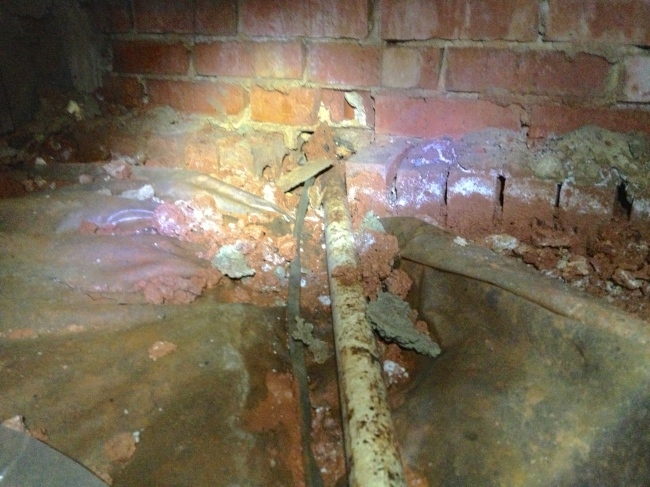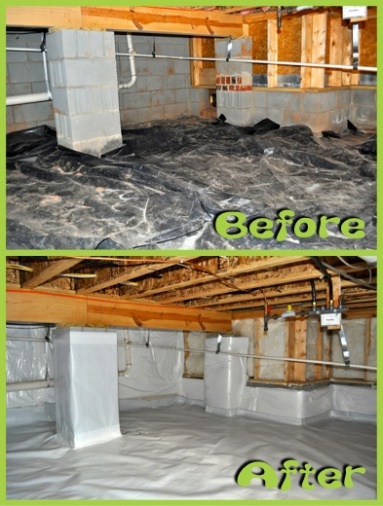 |
| How NOT to install a sump pump |
- No lid. A proper sump basin has a lid which serves multiple purposes. 1) A lid prevents the basin water from evaporating back into your crawl space and eventually being absorbed by your insulation and floor joist. 2) A lid helps ensure a clean environment for the sump pump. Notice the dirtiness of the water and the inside of the green basin. 3) A lid is also a safety mechanism to prevent Barky or Meow from falling in. Sadly, while performing a routine inspection, one of our technicians found a customer's puppy that had been missing for months.
- Five-gallon bucket, rather than a proper sump pump basin. There are several models that will get the job done, but the typical basin is about twice the depth and four times the volume of this five-gallon bucket.
- No holes to allow ground water to enter basin. In a crawl space environment it is most effective to drill holes around the basin to allow ground water to enter the basin and then be pumped out. The only water entering this basin is being pumped through tubes (black 1" tube above) from a dehumidifier. Notice the ground surrounding this sump basin is wet and muddy because the ground water has no way of entering the basin.
Visit our website to learn more about sump pumps, crawl space waterproofing, and basement waterproofing. Or contact us to schedule a free inspection of your home.





